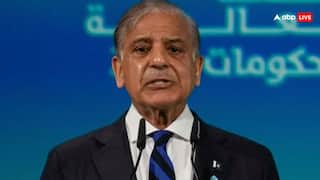Independence Day 2024: Why Prime Minister Delivers I-Day Address From Red Fort, Know History & Significance
Independence Day 2024: The historic Red Fort in Delhi is the traditional venue for the Prime Minister's Independence Day speech, a custom that began in 1947 by Pdt Jawaharlal Nehru. Know about its significance as a venue for I-Day celebrations.

Independence Day 2024: Every year on Independence Day, the nation eagerly awaits the Prime Minister's speech from the historic Red Fort in Delhi. This tradition, which began with Jawaharlal Nehru's iconic address on the eve of India’s independence, has become a symbol of the country's freedom and resilience.
The Red Fort, built between 1639 and 1648, has long been entwined with India's history, especially during the freedom struggle. After the British captured Delhi in 1803, the fort became a symbol of imperial power. However, it was during the Sepoy Mutiny of 1857 that the Red Fort and its then-occupant, Bahadur Shah Zafar, became symbols of rebellion against British rule. The British, in an effort to erase its association with rebellion, demolished more than two-thirds of the fort's structures and converted it into a garrison.
Despite these efforts, the Red Fort remained a potent symbol of indigenous authority.
ALSO READ | ISRO Likely To Launch Earth Observation Satellite-08 On Independence Day
Red Fort's Significance As A Power Centre
Even after the fall of Delhi in 1857, the city continued to be seen as a significant centre of power. Historian Swapna Liddle, writing for The Indian Express in 2021, highlighted this, noting, "Not only did the Mughal territories shrink, but the Mughal emperor also became increasingly ineffectual within them. Yet, such was his symbolic significance as the source of legitimate sovereign authority that many new states, including the East India Company, continued to rule in his name, and to issue coins in his name until well into the 19th century."
According to estimates, as much as 80 per cent of the Red Fort’s original inner structures were demolished and British buildings were constructed to house their troops and service their needs.
The Red Fort's significance was further cemented during the trials of senior officers of the Indian National Army (INA) in 1945-46, which were held at the monument. These trials ignited nationalist sentiments and solidified the fort's role as a symbol of resistance.
Independence Day: Reclaiming Red Fort From Colonial Past
When India gained independence in 1947, Nehru's decision to hoist the national flag over the Red Fort was a powerful act of reclaiming the monument from its colonial past. Nehru, who referred to himself as the "pratham sevak" of India, began the tradition of addressing the nation from the fort's ramparts, a practice that continues to this day.
The annual Independence Day celebrations at the Red Fort begin with the Prime Minister hoisting the national flag, followed by a 21-gun salute and the singing of the national anthem. The Prime Minister's "Address to the Nation" highlights the country's achievements over the past year, discusses key issues, and pays tribute to the freedom fighters whose sacrifices made the nation's independence possible.
The Red Fort is an integral part of India’s Independence Day celebrations and the choice of this iconic monument as the venue for the Prime Minister's address is deeply rooted in its historical significance, both as a symbol of India's struggle for freedom and its eventual triumph over colonial rule.






































